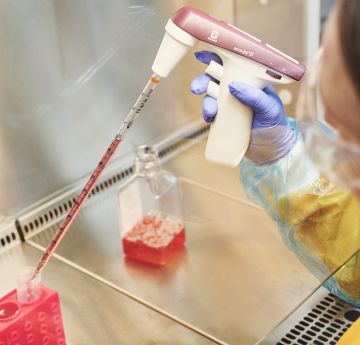Illtud Dunsford - Farmer, Charcutier, Microbiologist and CEO of Cellular Agriculture
APT Bioscience Advanced Professional Training, Class of 2012

Illtud Dunsford - Farmer, Charcutier, Microbiologist and CEO of Cellular Agriculture
APT Bioscience Advanced Professional Training, Class of 2012
The world is changing, and so is the way we think about food.
More frequent disruptions - whether from weather, geopolitics, or global supply chain shocks -have reminded us that resilience is no longer just a goal. It’s a necessity. In many regions, the question isn’t only how to grow more food, but how to grow it reliably, efficiently, and closer to where it’s needed.
My time at Swansea University was as part of an industrial program with the food industry. An associate degree in microbiology led to research connections that supported work on fatty acid analysis of multiple pig breeds used by my then meat processing business Charcutier Ltd. Having won the Best Food Producer in the UK from the BBC Food and Farming Awards in 2016 we were at the time at the forefront of UK artisanal production boasting London food halls such as Harrods, Fortnum and Mason and multiple Michelin starred chefs as customers. However, I was acutely aware of the increasing pressures on our food systems and the need for diversification in the way we produced human nutrition.
One of the most promising developments in this space is cultivated food (often referred to as lab-grown foods): producing meat, seafood, dairy, chocolate, coffee, and other forms of nutrition directly from animal or plant cells. It’s an approach that’s evolving quickly, with scientists, engineers, and food producers working together to make it more scalable and accessible and with product regulation secured in the USA, Singapore, Hong Kong, Australia, New Zealand and Israel. Cultivated foods are already on the market in the UK too, but only for our companions via pet food company Meatly.
Alongside traditional agriculture cultivated food offers an additional path - one that adds flexibility to how and where we produce nutrition. And while its most visible applications are in everyday markets, it also holds potential in more specialised settings. From humanitarian missions in the aftermath of natural disasters to extended stays in remote or challenging environments, compact systems capable of producing fresh food could become a valuable resource when conventional supply routes are strained.
For cultivated food to reach its full potential, the focus must go beyond science alone. One of the most important - and least visible pieces of the puzzle is infrastructure. Cultivated food needs production systems that are built specifically for food: systems that are consistent, cost-effective, and designed for scale. Much of the current equipment in use was originally developed for other industries. Transitioning to food-grade solutions is key to wider adoption.
In 2018, I moved away from food processing to focus solely on this challenge having co-founded Cellular Agriculture Ltd with Prof. Marianne Ellis, who at the time was the Head of Chemical Engineering at the University of Bath. Drawing on deep experience in farming and engineering, we’ve been developing bioreactor systems and bioprocesses tailored for cultivated food production. The goal is to help food producers scale faster, reduce costs, and bring their products to market with greater confidence.

We recently contributed to a landmark study led by the Royal Agricultural University, which explored how cultivated food could work in harmony with farming. The findings were encouraging. By using agricultural by-products - such as oilseed residues or natural protein sources - growth media for cultivated cells could be made more affordable and sustainable. This creates new opportunities for producers across the food value chain and highlights the role of collaboration in shaping what comes next.
Our research with the European Space Agency has extended that thinking even further, looking at how cultivated food systems could be applied in extreme environments. The lessons from that work - on efficiency, reliability, and independence from traditional supply - are informing how we design systems here on Earth, especially in areas where logistics are complex or vulnerable to disruption.
What emerges from all of this is a broader picture: one where cultivated food complements existing methods, strengthens food resilience, and unlocks new possibilities for innovation and collaboration.
As someone who grew up in farming, I see this as part of a long tradition of adaptation. Agriculture has always evolved - season to season, generation to generation. Today, we have an opportunity to expand that tradition by building the tools and technologies that tomorrow’s food producers will depend on.
The path ahead will require openness, shared effort, and steady focus. But the potential is real - and already taking shape.
The systems we build today will support the food systems of tomorrow. And if we build them well, they’ll help nourish not just people, but possibilities.